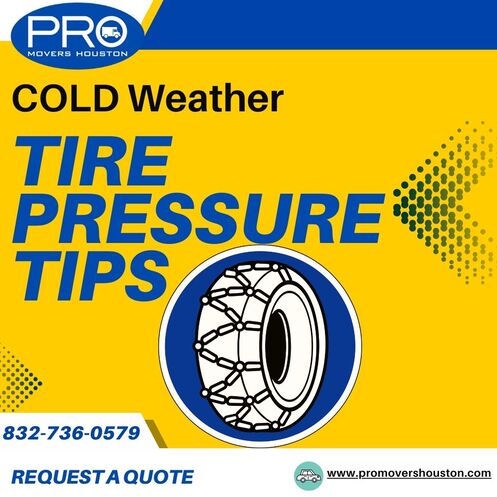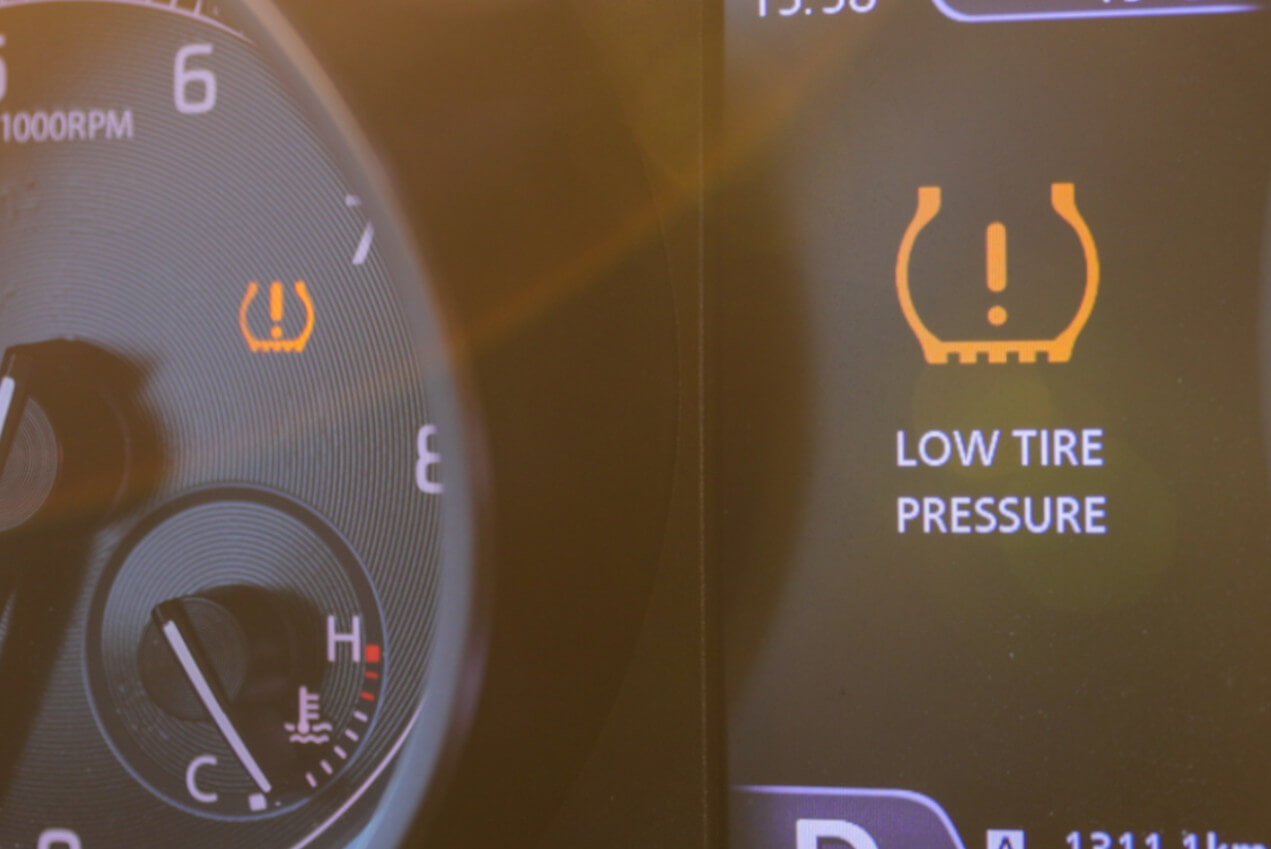As the crisp fall air settles in, your car’s tires face a hidden challenge: dropping temperatures can quietly lower your tire pressure. This might seem small, but it can affect your safety, fuel efficiency, and tire life.
You don’t want to get caught off guard on chilly mornings or during weekend drives. You’ll discover simple, effective tire pressure tips that keep your ride smooth and secure all season long. Keep reading to protect your tires—and yourself—from the cold weather’s sneaky effects.
Impact Of Cold Weather On Tire Pressure
Cold weather affects tire pressure more than most drivers realize. As temperatures drop, air inside tires contracts. This causes the pressure to fall below the recommended level. Low tire pressure can lead to poor car handling and increased tire wear. Checking tire pressure during fall is crucial for safe driving.
How Temperature Affects Air Pressure
Air pressure changes with temperature. Cold air shrinks, reducing pressure inside tires. For every 10°F drop, tire pressure falls by about 1 to 2 psi. This means tires can become underinflated quickly as the weather gets colder. Proper inflation requires regular pressure checks in fall.
Common Pressure Drops In Fall
Pressure often drops 2 to 4 psi during cold fall mornings. This change happens overnight when temperatures are lowest. Many drivers do not notice because pressure seems fine during the day. Checking tire pressure early in the day helps catch these drops.
Risks Of Low Tire Pressure
Low tire pressure affects vehicle safety and efficiency. Tires wear out faster and unevenly. Handling and braking become less reliable. Fuel efficiency also decreases with underinflated tires. Maintaining correct pressure reduces these risks and keeps your car safe.
Checking Tire Pressure In Fall
Checking tire pressure in fall is important for safe driving. Cold weather makes air inside tires shrink. This lowers tire pressure without you noticing. Low pressure can cause poor grip and more tire wear. Regular checks keep your tires in good shape during chilly months.
Best Times To Check Pressure
Check tire pressure when tires are cold. Early morning or after the car has been parked for a few hours is ideal. Avoid checking right after driving. Heat from driving raises tire pressure and gives wrong readings.
Tools For Accurate Measurement
Use a reliable tire pressure gauge for best results. Digital gauges are easy to read and accurate. Manual gauges work well too. Avoid using the gauge at gas stations if it looks old or damaged.
Frequency Of Pressure Checks
Check tire pressure at least once a month in fall. Check more often on cold days or after big temperature drops. Regular checks help catch slow leaks and maintain proper tire pressure.
Adjusting Tire Pressure For Safety
Adjusting tire pressure is crucial for safe driving during cold fall weather. Tire pressure drops as temperatures fall. This change affects how your car handles and brakes. Keeping the right tire pressure helps maintain traction and control. It also prevents uneven tire wear and improves fuel efficiency. Checking and adjusting tire pressure regularly ensures safety on chilly roads.
Recommended Pressure Levels
Check the tire pressure recommended by your vehicle’s manufacturer. This information is usually on a sticker inside the driver’s door. Use a reliable tire pressure gauge to measure the pressure. Cold weather can lower tire pressure by about 1 PSI for every 10 degrees drop. Inflate your tires to the recommended level to avoid underinflation. Proper pressure keeps your tires gripping the road well.
Balancing Comfort And Performance
Too low pressure can make your ride soft but unsafe. Tires may feel smoother but lose responsiveness and control. Too high pressure leads to a harsh ride and less traction. Find a balance that suits your driving style and road conditions. Staying close to the recommended pressure ensures comfort and good performance. Avoid guessing; always measure before adjusting.
Dealing With Pressure Fluctuations
Temperature changes cause constant pressure shifts in tires. Check your tire pressure at least once a week in fall. Always check tires when they are cold, not after driving. Use a portable air compressor or visit a service station for adjustments. Monitor pressure more often during sudden cold snaps. Keeping pressure steady improves safety and tire life.

Credit: www.cleroutire.com
Fuel Efficiency And Tire Pressure
Fuel efficiency depends a lot on tire pressure, especially in cold fall weather. As temperatures drop, tire pressure can fall too. This drop causes tires to become underinflated. Underinflated tires make your car work harder and use more fuel.
Keeping the right tire pressure helps your car run smoothly. It lowers the energy needed to move. This means better gas mileage and fewer stops at the pump.
How Pressure Affects Gas Mileage
Low tire pressure increases rolling resistance. Your engine must use more fuel to move the car. Just a small drop in pressure can lower gas mileage by 1 to 2 percent. Over time, this adds up to more fuel used and higher costs. Properly inflated tires help maintain optimal mileage and reduce fuel waste.
Cost Savings From Proper Inflation
Maintaining correct tire pressure saves money on fuel bills. Less fuel means fewer dollars spent on filling up. It also reduces wear on tires, cutting down replacement costs. Checking tire pressure monthly can lead to noticeable savings during fall and winter months.
Long-term Benefits For Vehicle
Proper tire pressure extends tire life by preventing uneven wear. It reduces stress on suspension parts and improves handling. This leads to fewer repairs and maintenance costs. Your car stays safer and more reliable in colder weather with well-inflated tires.
Maintaining Tires Through Fall Season
Fall brings cooler temperatures that affect tire performance. Maintaining tires through the fall season helps keep your vehicle safe and efficient. Proper care reduces risks on wet and cold roads. It also extends the life of your tires, saving money on replacements.
Simple checks and regular maintenance can prevent many common tire problems. Start by inspecting your tires often. Keep them balanced and rotated for even wear. Know the signs that show when it is time to replace your tires.
Inspecting For Wear And Damage
Check tires for cuts, cracks, or bulges on the sidewalls. Look for uneven tread wear, which can cause poor handling. Use a tread depth gauge or a coin to measure tread depth. Replace tires that have less than 2/32 inch tread for safety.
Inspect tires before every trip during fall. Cold weather can worsen small damages quickly. Fix or replace damaged tires to avoid blowouts or accidents.
Rotating Tires Regularly
Rotate tires every 5,000 to 7,000 miles to ensure even wear. Front tires often wear faster due to steering and braking forces. Moving tires from front to back balances the wear pattern.
Regular rotation improves tire life and vehicle performance. It also helps maintain proper traction on slick fall roads. Follow your vehicle’s owner manual for the right rotation pattern.
When To Replace Tires
Replace tires if tread depth is too low or if there is visible damage. Tires older than six years may lose performance, even if they look fine. Check the tire’s manufacture date on the sidewall.
Swap old or worn tires before winter sets in. Good tires provide better grip on cold, wet, or icy surfaces. Staying proactive keeps you safer on fall drives.

Credit: www.promovershouston.com
Additional Tips For Fall Driving
Fall driving brings unique challenges that require extra care. Cooler temperatures and changing weather affect your car’s performance. Tires, brakes, and visibility need special attention during this season. Below are practical tips to drive safer and protect your vehicle.
Adjusting Driving Habits
Drive slower than usual on fall roads. Leaves and frost can make surfaces slippery. Keep more distance between cars to allow extra stopping time. Use gentle braking and steering to avoid skidding. Stay alert for sudden changes in road conditions.
Preparing For Wet And Slippery Roads
Check your tires for good tread before the season starts. Proper tire pressure improves traction on wet roads. Avoid sharp turns and quick stops on slick surfaces. Use headlights in rain or fog to increase visibility. Watch for fallen leaves that hide ice or potholes.
Emergency Kit Essentials
Keep a basic kit in your car during fall months. Include items like a flashlight, blanket, and first-aid supplies. Add a tire pressure gauge and portable air pump for quick fixes. Pack non-perishable snacks and water for unexpected delays. A small shovel and ice scraper can help in colder weather.

Credit: www.greasepro.com
Frequently Asked Questions
How Does Cold Fall Weather Affect Tire Pressure?
Cold fall weather causes air inside tires to contract. This lowers tire pressure, making tires underinflated. Underinflated tires reduce fuel efficiency and can wear unevenly. Regularly check and adjust tire pressure during cold seasons for safe driving.
How Often Should I Check Tire Pressure In Fall?
Check tire pressure at least once a month in fall. Temperature drops can reduce pressure quickly. Use a reliable gauge for accuracy. Properly inflated tires improve safety and prolong tire life during cold weather.
What Is The Ideal Tire Pressure For Cold Weather?
Follow your vehicle manufacturer’s recommended tire pressure listed on the door jamb. Avoid overinflating tires to compensate for cold air. Proper inflation ensures better traction, fuel efficiency, and tire durability in fall and winter.
Can Low Tire Pressure Cause Accidents In Fall?
Yes, low tire pressure reduces traction and handling. Cold weather already makes roads slippery. Underinflated tires increase stopping distances and risk hydroplaning. Maintain correct tire pressure to improve safety on wet, icy fall roads.
Conclusion
Cold weather makes tire pressure drop quickly. Check your tires often to keep them safe. Proper tire pressure helps your car drive better. It also saves fuel and stops tire wear. Use a good gauge to measure pressure right. Adjust tires before long trips or heavy loads.
Stay safe on chilly roads by staying prepared. Small steps keep your tires working well in fall. Don’t forget to check pressure as the seasons change. Simple care means safer and smoother rides ahead.
Disclosure: As an Amazon Associate, I may earn from qualifying purchases at no extra cost to you. Amazon and the Amazon logo are trademarks of Amazon.com, Inc, or its affiliates.

I am Sadman, the founder of CarSensorHub.com, where I share my passion for cars and technology. I specialize in writing detailed reviews and helpful guides on car gadgets, accessories, safety tools and many more. My mission is to help car owners discover the best products and tips to improve their driving experience and stay safe on the road.


